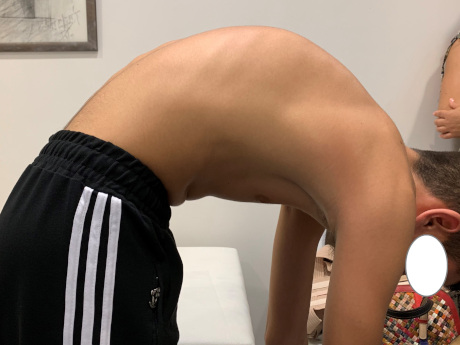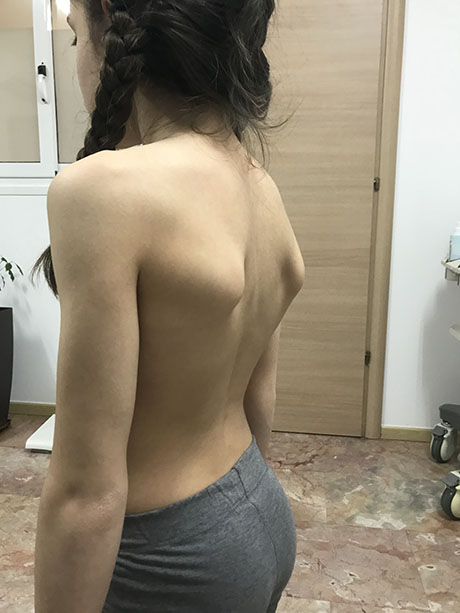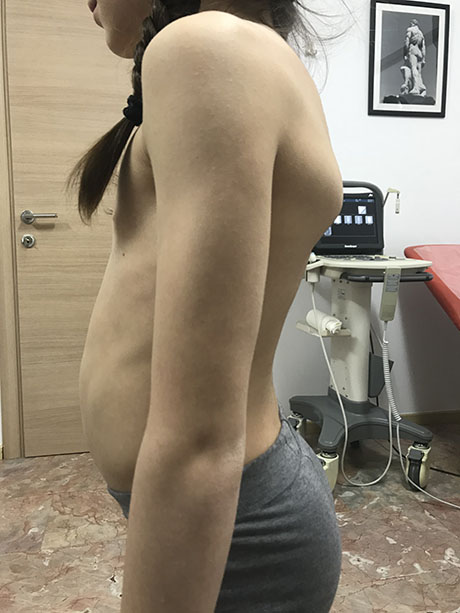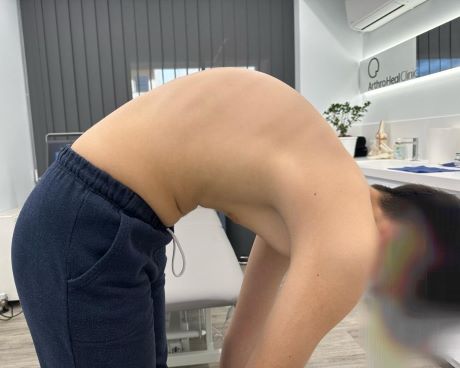CHILDREN KYPHOSIS
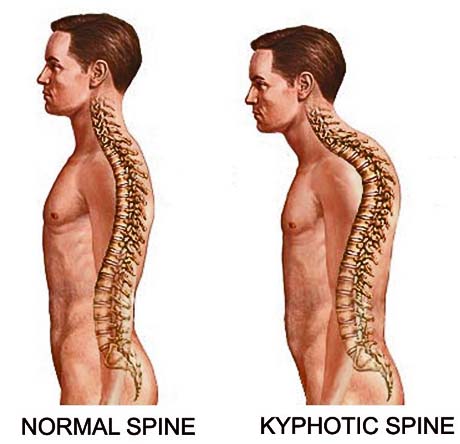
Kyphosis in children is a relatively common phenomenon that concern parents and pediatricians. The configuration of the spine in the sagittal plane (profile) significantly affects the appearance, cardiopulmonary function and the likelihood of spondyloarthritis in life. The spine has three curvatures: cervical lordosis, thoracic kyphosis and lumbar lordosis. The upright position requires a balance between them because they are interrelated.
The leg alignment also affects the spine. For example excessive lumbar lordosis typically compensates by contracture of the hip.
The kyphosis is usually painless. The painful kyphosis need direct control with additional imaging tests such as MRI or CT scans.
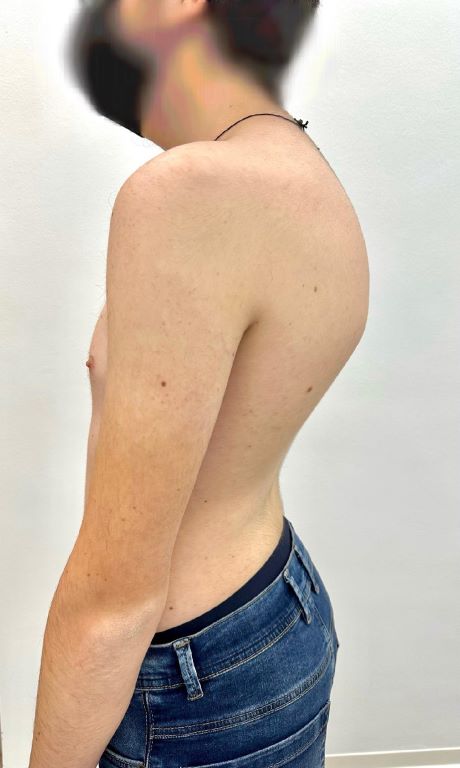
Adolescent 16 years old. Scheuerman disease
Boy 14 years old with thoracic kyphosis
KYPHOSIS
Kyphosis is a spinal deformity characterized by an increase in the posterior convex angulation in the sagittal plane. The normal posterior convex angulation of the thoracic spine is 20-40 degree measured by the Cobb method (X-ray)
X-ray of the thoracic spine 52 degree of kyphosis (Cobb method). Boy 12 years old
ROUND SHOULDER
Usually in everyday clinical practice meet children with so-called round shoulder which is a natural variant of the spine, particularly the problem is a cosmetic.
The back is flexible and can be enhanced by requiring the child to straight the spine without causing permanent deformation. Usually we see one of the two parents of the child (inherited body composition).
Round shoulder
Functional correction of the shoulders with back extension exercise
The boy has no disturbance of the spine in the frontal plane
Boy 9 years old with rounded shoulders. We see in the photo except the thoracic kyphosis (high red arrow) and increased lumbar lordosis (low red arrow)
Panoramic view of the child’s shoulder. Observe the forwardly inclined shoulder. (The child’s father has exactly the same clinical picture on the shoulders)
Girl 12 years with functional kyphosis (rounded back – round shoulder red line) and a compensatory lumbar lordosis. There insolence and belly (orange arrow)
Many times during the clinical examination is observed that the shoulders are not at the same height. This may indicate a problem in the spine which need control by special orthopedic
Girl in adolescence with functional kyphosis. The prolapse of the scapula bilaterally and the compensation of the belly of the girl (compensatory lordosis)
SCHEUERMANN KYPHOSIS
Scheuermann’s kyphosis is a disorder of endochondral ossification that affects the vertebral endplates and ring apophyses, resulting in intravertebral disc herniation, anterior wedging of consecutive vertebrae (>5 degree in three adjancent thoracic vertebrae), and fixed thoracolumbar kyphosis.
The exact etiology is unknown. A familian predilection has been theorized. Increased height and repetitive loading may be inciting factors
Scheuermann’s disease in overweight teenager
Wedge deformation of thoracic vertebrae suggesting kyphosis due to Scheuermann disease

